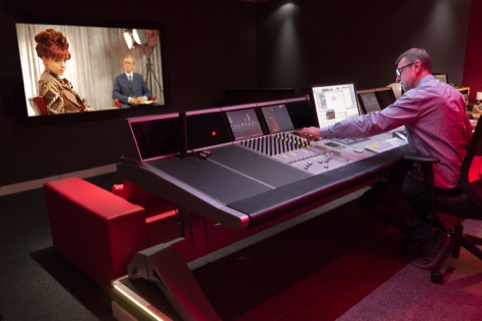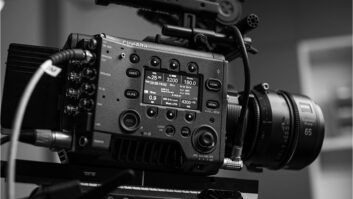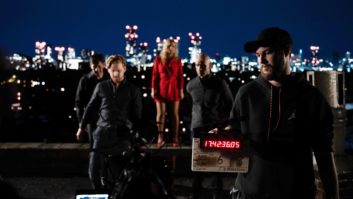
ITV Manchester’s relocation from the city centre to nearby Salford Quays provided an ideal opportunity to reinvent the broadcaster’s post production workflow. Will Strauss reports.
Noun: workflow; plural noun: workflows. 1. The sequence of industrial, administrative, or other processes through which a piece of work passes from initiation to completion.
Sounds simple doesn’t it? Yet television producers the world over seem to spend half their days discussing how to improve, refine, update, change or overthrow their current working practices. The move from tape-based to digital production necessitated this and, despite complications, also provided greater freedom and the chance to reinvent the way television is made on both a creative and technical level. One of the best opportunities to do this, of course, is when you have a blank canvas to work with: when a company, department, division or team moves office, for example. ITV in Manchester (the artist formerly known as Granada) is a great case in point.
In 2013, when the commercial broadcaster’s northern operation moved from Quay Street in Manchester city centre to MediaCityUK in Salford, the first task was to work out how to move the North of England’s largest production facility 2.5 miles down the road without dropping a frame. The second was to devise a way of making it work more efficiently once it got there. Both were significant challenges, not least when you consider that ITV Manchester is responsible for 800 hours of broadcast television every year. That’s about 2.5 screen hours per day. The facility itself is involved in just about every facet of television post production from ingest, backup, editing, graphics and visual effects to dubbing, grading, archive, QC and transmission. To move this broadcast mountain lock stock and barrel required serious planning from ITV technical manager Taig McNab and his chosen systems integrator Root6. After months of discussion, in which every conceivable use of space was investigated – from edit suites around the edge of the building to a facilities island in the middle of each floor – they agreed on a design and a plan of action.
During this process, however, it also became clear that the move would be a great opportunity to adopt, as McNab puts it, a more “elegant and flexible” way of working. “We had a rather limited budget to do all this so we couldn’t just buy a load of new stuff to put in our new building,” he says. “Where possible, we had to re-use what we had at Quay Street.” At the same time, because Quay Street had to be kept running throughout the migration, the current infrastructure couldn’t be re-used. Although this created something of an impasse, the potential negative was quickly turned into a positive, a challenge becoming an opportunity. “The fact that we had to build a new one gave us the opportunity to address some of the challenges that had built up at Quay Street,” says McNab. “Due to it being an old building that had evolved over the years, there were a number of pools of infrastructure and it was difficult to create elegant workflows and it was tough to support.”
Work wherever, whenever
The resultant new set-up is based around the mantra of ‘work wherever, whenever.’ The key to this, says McNab, was “unlocking the space from the task”, in much the same way that ‘normal’ office workers can with laptops, mobile phones and online collaboration. So, working with Root6, he set about offering the same kind of choice for production staff by devising an infrastructure that allowed any technology to be used in any suite or room.
“Why do you have to edit in an edit suite?” asks McNab. “Why can’t you edit in a meeting room if you want to? That drove quite a lot of the infrastructure decisions.” The secret to making this work in practice was Amulet Hotkey’s zero client, a KVM (Keyboard, Video and Mouse) technology that allows a user to access and use any of the hardware and software in the machine room from a single interface at their desk.
Originally adopted by the financial community, it enables users to access multiple systems from a single interface over a network connection without operators and, more importantly, the operating system or application being aware that it is being used from afar. “It sends two 1920×1200 DVI displays, computer, audio and mic feeds and the USB signals over a single CAT-6 network cable,” explains McNab. “Pretty much every single computer we have in the facility is connected to this system and that means that, at the press of a button, you can select which physical machine you want to connect to without having to move rooms, or even buildings. We’ve had Avid systems physically located in Salford Quays being operated from Quay Street.”
As a result, a craft editing room within the new facility features 24-inch CPU monitors, an SDI monitor, a rasteriser display, speakers, an audio mixer, a mouse and keyboard but no computer. Freedom indeed. Clearly “you cannot do a grading session in the canteen”, says McNab but, where it is appropriate, staff can work where they feel most comfortable and feel most productive.”
Away from the Amulet system, the majority of the traditional broadcast infrastructure is concentrated on the fourth floor of ITV’s new offices, spanning out from the central machine room. Included are networking, audio and video to “pretty much every room on the floor, including the meeting rooms” plus uncompressed feeds to most of the communal televisions. IPTV encoders are available for firing pictures around the company network while ITV’s own nationwide 10Gb network and its video circuits for transfer and transmission can send content further afield.
“Compared to the old set-up at Quay Street, concludes McNab, the new Salford facility, because it was designed rather than an organic topology, affords a significantly better workflow and connectivity. With centralised hardware and the ability to route to anywhere, it is a highly adaptable and efficient facility designed, not just for now but for the future too. “Redesigning the infrastructure has allowed us to create a really flexible installation that will suit us for years to come,” he says.







